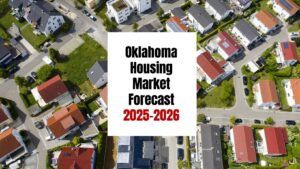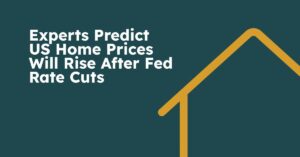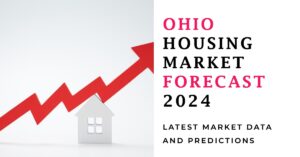Navigating the complex maze of the housing market is no easy feat, and understanding what Kamala Harris' plan for the housing market entails is crucial for many Americans feeling the pinch of rising costs. With affordability at the forefront of national discussions, Vice President Harris has laid out a series of proposals aimed at tackling the twin challenges of housing availability and expense. This ambitious initiative seeks to reshape how we think about housing while promoting equity in home ownership.
Kamala Harris' Housing Market Plan: Affordability and Accessibility
Key Takeaways
Harris' proposals come in response to a glaring reality: the U.S. housing market is in distress. From unaffordable rents to a dwindling number of available homes, the challenges are clear. According to recent discussions, there is an urgent need to create mechanisms that promote more housing stock, particularly for low- to middle-income families. The current trajectory has led to a housing crisis where many are left without viable options.
Understanding the Housing Market Crisis
Before diving into Harris' strategic plans, it’s vital to set the context by acknowledging the housing crisis' implications. Recent studies underline that the national average for rent has doubled over the past decade in many urban areas. In states like California and New York, even modest apartments can cost well over $2,000 monthly, forcing families to allocate a significant portion of their income just to keep a roof over their heads.
Personal experience has shown me that many are grappling with the burden of unstable housing situations, which can impact everything from job stability to school attendance for children. The crisis is not just an economic issue; it envelops societal aspects that affect health, education, and personal well-being.
Proposed Solutions to Tackle Housing Affordability
Kamala Harris' plan emphasizes a multi-faceted approach to alleviate this ongoing crisis. Some significant proposals include:
1. Expanding Affordable Housing Supply
One of the cornerstones of Harris’ plan is to increase the availability of affordable housing units. This would involve providing funds and support for constructing new homes and converting existing structures into livable spaces. Harris advocates for legislation that encourages local governments to streamline zoning regulations to facilitate rapid development of multifamily housing. For more insights on the current status of housing, check out Housing Market 2024: Key Predictions for the Remainder of the Year.
Thoughts on the Importance: I believe this step is crucial. Many cities face restrictive zoning laws that inhibit the construction of new homes, trapping communities in a cycle of housing scarcity. By incentivizing cities to adopt more flexible zoning rules, we could witness a significant increase in housing availability, which can, in turn, alleviate upward pressure on prices.
2. Financial Support for First-Time Homebuyers
In an effort to empower first-time homebuyers, Kamala Harris proposes a comprehensive downpayment assistance program. The plan includes offering grants of up to $25,000 to families looking to purchase their first home. Harris argues that this assistance will ease barriers to entry and invigorate the housing market by allowing more individuals to invest in homes. For related discussions on financial assistance, consider reading Biden Administration's Bold Move for Affordable Housing.
Personal Insight: Having observed friends and family navigate the anxieties of home-buying, I can attest to the emotional weight carried by the need for extensive savings, often leading to years of renting and frustration. This assistance could indeed enable countless families to achieve their dream of homeownership, stabilizing communities in the process.
3. Promoting Inclusive Housing Policies
Harris' plan also looks to address equity within housing, focusing on marginalized communities often sidelined in mainstream housing discussions. By instituting funding that prioritizes projects in historically underrepresented neighborhoods, the vice president's plan aims to dismantle the systemic barriers that have disenfranchised these communities.
Consideration: Knowing the importance of inclusivity, it’s refreshing to see policies that address not just quantity but quality of housing access. As I witness gentrification affecting local communities, this initiative could foster economic stability and foster community engagement by ensuring affordable housing options for all demographics.
Funding and Implementation
However, the grand scale of this proposal raises questions about funding. Estimates indicate that full implementation could require as much as $500 billion over a decade. While this figure may appear daunting, proponents argue that such investments pay dividends in economic growth and community wellbeing. For a broader economic context, check out the article on Housing Market Predictions: 2024 and 2025 Remain Subdued.
Challenges Ahead
Despite the promise of Harris' plan, there are formidable challenges. The housing sector is notorious for its political complexities, making bipartisan support essential yet often elusive. As detailed in a recent New York Times article, tackling housing affordability might be overshadowed by impending economic pressures and competing political agendas.
Moreover, critics of the plan argue about whether these measures will sufficiently stimulate housing development or merely act as temporary fixes. The intricacies of real estate economics suggest that merely pouring funds into the system cannot guarantee the timely approval of housing projects or a reduction in prices. To gain further insights into market stability, you might find What is the Housing Market Heading Toward in 2024? useful.
The Road Ahead
In conclusion, Kamala Harris' strategy for the housing market is ambitious and multifaceted, aiming to ease the strain on a beleaguered housing system while promoting equity in homeownership. By focusing on increasing housing supply, providing direct financial assistance, and prioritizing inclusivity, the vice president is signaling a commitment to addressing the underlying issues of housing inequality.
But the real concern lies in execution, with the sheer scale of necessary changes presenting a formidable challenge. As observers of this crucial issue, we must stay abreast of these developments, as they are bound to shape the future landscape of American housing for years to come.
Recommended Read:
- Trump vs Harris: Which Candidate Holds the Key to the Housing Market (Prediction)
- How the Housing Market Fared During Obama’s Presidency – An Analysis
- Housing Market Predictions for a Second Trump Presidency
- Is the Housing Market on the Brink in 2024: Crash or Boom?
- 2008 Forecaster Warns: Housing Market 2024 Needs This to Survive
- Housing Market Predictions for Next 5 Years (2024-2028)
- Housing Market Predictions for the Next 4 Years: 2024 to 2028
- Real Estate Forecast Next 5 Years: Top 5 Predictions for Future
- Real Estate Forecast Next 10 Years: Will Prices Skyrocket?











